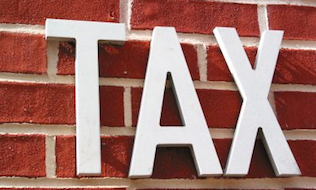

Anyone who has grappled with Canada’s pension-related GST/HST rules can agree with the Association of Canadian Pension Management’s recent assertion that the rules are “extraordinarily complex.” However, this complexity can be tamed through appropriate expertise and knowledge of pension trust principles, coupled with an understanding of the tax policy objectives and policymaker assumptions underlying those objectives.
To my knowledge there’s little in the way of explicit statements by the Department of Finance on the GST/HST tax policy objectives relating to pension plans. Based on legislative provisions together with any explanatory notes that may (or may not) have been supplied and administrative interpretations made by the Canada Revenue Agency, I infer the following objectives:
- Trusts (including pension trusts) are persons for tax purposes;
- Fairness principles should apply such that all pension trusts experience the same levels of taxation; and
- GST paid out of a pension trust should not be eligible for an input tax credit claim by an employer.
Read: Tax rules on pension plans and investment entities ‘extraordinarily complex:’ ACPM
The first objective is simply met by including trusts in the definition of “person” under the Excise Tax Act. The second objective is reflected in the original pension rebate made available to multi-employer pension plans under the ETA in 1999 and set at 33 per cent of GST paid. This rebate tied into an interpretive notion that approximately 33 per cent of pension expenses for single-employer plans were typically related to employer expenses around pension administration and were eligible for input tax credits. Expenses relating to the operation of the pension fund (held under a trust) were not considered to be employer expenses.
The third objective is reflected in a technical information bulletin first published in 1990, and its subsequent iterations, and is related to the first objective: that a pension trust is a taxable entity (person) that’s separate and distinct from an employer that’s also the administrator of the pension plan. The execution of this policy objective was fundamentally flawed. This became apparent in a successful court challenge made by General Motors of Canada Co. in 2008 and upheld in 2009.
Read: New GST and HST changes affecting pension plans
The result was a shift in tax policy to permit input tax credits to be claimed and to create the new pension plan deemed supply tax, the purposes of which were to:
- Negate pension-related input tax credits by implementing a new tax on the value of pension-related invoices included in input tax credit claims; and
- Add a tax on the value of the in-house administrative activities of the employer relating to the pension plan.
The second purpose was offset by changing the multi-employer pension plan rebate to apply to all pension trusts, thus preserving the second tax policy objective. It’s worth noting that the pension plan deemed supply tax is neither a value-added nor sales tax, but would instead best be described as an excise duty.
Read: Pension changes among issues in consultations on GST rules
The fundamental flaw in the previous policy around employer claims to input tax credits for pension-related expenses is the concept that a pension trust (or any trust for that matter) can receive or make supplies of goods and services. In point of fact, trusts are not persons under the common law and thus they can’t enter into contracts for purposes of making or receiving supplies. Trustees, however, can enter into such arrangements in respect of a trust, in which case the Excise Tax Act deems any resulting transactions to have been made by the trust.
The new deemed supply tax generally sidesteps this issue. However, there are supplementary provisions to the deemed supply tax that presume pension trusts can receive or make supplies, thus adding a number of complicating factors, including unnecessary actual or phantom collection of taxes by employers resulting in unnecessary requirement to issue tax adjustment notes.
Unfortunately, the CRA and most tax practitioners who lack expertise in relation to pension trust principles fail to recognize the absence of “personhood” of trusts under the common law and thus embrace all of the complicating factors that might be otherwise avoided. Further complications arise where an employer sponsors multiple plans as well as a master trust.
Read: Retooling pension custody for GST/HST reporting
The key to taming the complexity in pension GST/HST rules is to establish administrative practices for processing pension-related expenses that:
- Recognize and reflect the tax policy objectives; and
- Based on expertise and knowledge of pension trust principles, strategically allocate pension expenses and input tax credit claims to achieve simplification in complying with pension plan deemed supply rules and to minimize net GST/HST payable.
In a future column, I will explain the tax policy and keys to administrative simplification of the selected listed financial institution rules that apply to many multi-jurisdictional pension plans and master trusts.
